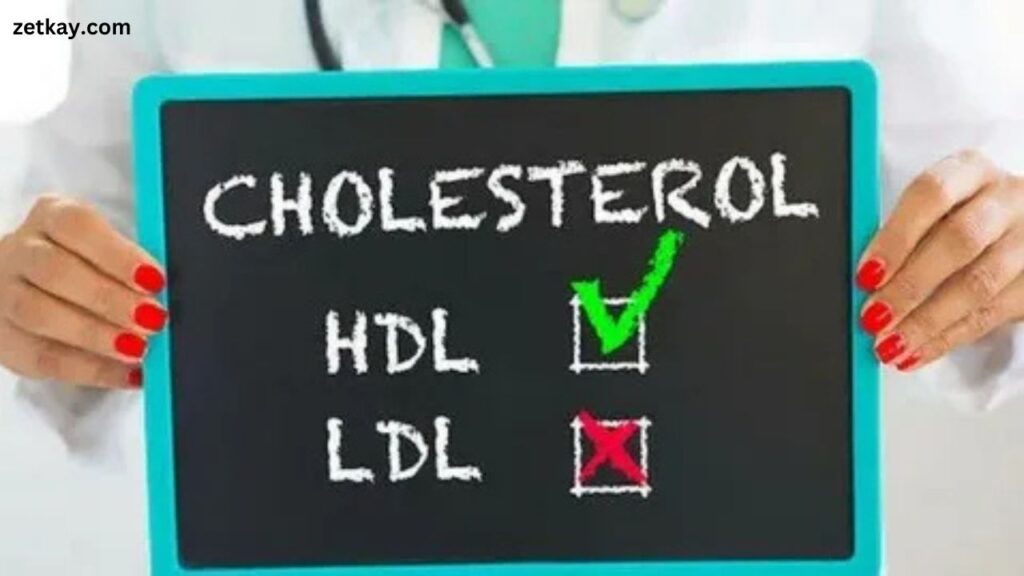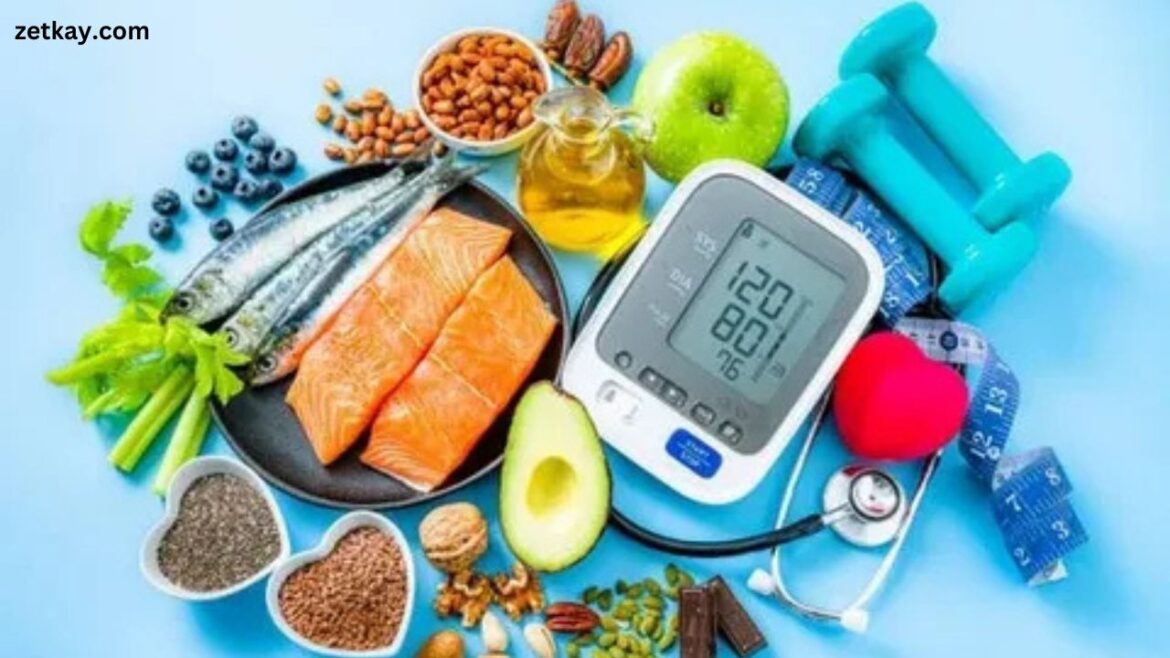Cholesterol is a type of fat found in your blood, and while your body needs it to build healthy cells, having high levels of certain types of cholesterol can increase your risk of heart disease. Thankfully, you can control your cholesterol levels by making healthy lifestyle changes, especially through diet and exercise. This article will explore how eating the right foods and staying active can help you manage your cholesterol levels and improve your heart health.
Understanding Cholesterol
Cholesterol comes in two main types:
- LDL (Low-Density Lipoprotein): Often referred to as “bad” cholesterol, LDL can build up in the walls of your arteries, making them narrow and harder for blood to flow through. This can increase your risk of heart disease and stroke.
- HDL (High-Density Lipoprotein): Known as “good” cholesterol, HDL helps remove LDL cholesterol from your arteries. The higher your HDL level, the better.
- Triglycerides: Another type of fat in your blood. High triglyceride levels can also increase the risk of heart disease.
When you have high LDL cholesterol or high triglyceride levels, it’s important to take steps to lower them. Eating a healthy diet and staying active can help you do just that.
The Role of Diet in Controlling Cholesterol
Your diet plays a crucial role in controlling cholesterol. By choosing the right foods, you can lower your LDL cholesterol and raise your HDL cholesterol.
Read More:
1 minute fitness challenge ideas
Best Exercises to Burn Fat and Lose Weight Quickly
A. Foods to Include
- Fiber-rich foods: Foods like oats, barley, fruits (such as apples and berries), and vegetables (like broccoli and spinach) are rich in soluble fiber. This type of fiber helps lower LDL cholesterols by binding to it and removing it from your body.
- Healthy fats: Unsaturated fats, like those found in avocados, olive oil, and nuts (almonds, walnuts), can help improve your cholesterol levels. These fats can increase HDL cholesterol and lower LDL cholesterol.
- Omega-3 fatty acids: Fatty fish like salmon, mackerel, and sardines, as well as plant-based sources like flaxseeds and chia seeds, are rich in omega-3s. Omega-3s help reduce triglyceride levels and improve heart health.
- Plant-based proteins: Beans, lentils, tofu, and other soy products are great alternatives to meat. They are high in protein and fiber, and they contain little to no saturated fat, making them heart-healthy options.
B. Foods to Avoid
To better manage cholesterols, it’s also important to avoid certain foods that can raise LDL levels and increase the risk of heart disease:

- Saturated fats: Found in red meat, full-fat dairy products (like cheese and butter), and many processed foods. Saturated fats can raise your LDL cholesterols levels.
- Trans fats: Found in many processed foods, baked goods, and fried foods. Trans fats are especially harmful because they raise LDL cholesterols and lower HDL cholesterols.
- Refined sugars and processed carbs: Sugary foods, sugary drinks, and refined grains (like white bread and pasta) can lead to higher triglyceride levels, which negatively affect your heart health.
The Role of Exercise in Controlling Cholesterol
Exercise is another powerful way to control your cholesterols. Regular physical activity can help raise HDL cholesterols, lower LDL cholesterols, and reduce triglycerides.
A. How Exercise Helps
Exercise benefits your heart in several ways:
- It raises HDL cholesterols: Physical activity helps remove LDL cholesterols from your arteries and boosts the production of HDL cholesterols, which helps protect against heart disease.
- It lowers LDL cholesterols and triglycerides: Exercise helps lower the amount of bad cholesterols and triglycerides in your blood.
- It improves heart health: Regular exercise strengthens your heart, improves blood circulation, and helps maintain a healthy weight.
B. Recommended Exercises
To control your cholesterols, try to include a mix of different types of exercise in your routine:
- Aerobic exercises: Activities like walking, jogging, cycling, and swimming help improve cardiovascular health and lower cholesterol levels. Aim for at least 30 minutes of moderate exercise most days of the week.
- Strength training: Lifting weights or doing resistance exercises (like squats or push-ups) can also help improve cholesterols levels and support overall heart health.
- Flexibility and relaxation: Yoga, stretching, and deep breathing exercises can help reduce stress, which is important for maintaining healthy cholesterols levels.
Lifestyle Tips for Managing Cholesterol
In addition to diet and exercise, there are other lifestyle changes you can make to help control cholesterols levels:
- Maintain a healthy weight: Carrying excess weight can raise LDL cholesterols and triglyceride levels. Losing weight, even by a small amount, can improve your cholesterols and heart health.
- Reduce stress: Chronic stress can affect cholesterols levels and overall heart health. Practice relaxation techniques, such as meditation or deep breathing, to reduce stress.
- Limit alcohol: Drinking too much alcohol can raise triglyceride levels and contribute to high blood pressure. Stick to moderate drinking (up to one drink per day for women and two for men).
- Quit smoking: Smoking lowers HDL cholesterols and damages the walls of your blood vessels, increasing your risk of heart disease. Quitting smoking improves your cholesterols and heart health.
Monitoring and Professional Guidance
While making lifestyle changes can help, it’s important to monitor your cholesterols levels regularly. Regular check-ups with your healthcare provider can help you track your progress and make adjustments if needed. In some cases, medication may be necessary in addition to lifestyle changes to control cholesterols levels effectively. Always work with your healthcare provider to create a personalized plan for managing your cholesterols.
FAQs: How to Control Cholesterols Through Diet and Exercise
1. What is cholesterols, and why is it important to control it?
Cholesterols is a waxy, fat-like substance found in your blood. While it’s essential for building healthy cells, high levels of LDL (bad cholesterols) can clog arteries, increasing the risk of heart disease and stroke. Controlling cholesterols helps maintain a healthy heart and overall well-being.
2. What are the best foods to eat to lower cholesterol?
Foods that can help lower cholesterols include:
- Oats, barley, and other whole grains
- Fruits like apples, berries, and oranges
- Vegetables such as broccoli and spinach
- Fatty fish like salmon and mackerel (rich in omega-3s)
- Nuts, seeds, and olive oil for healthy fats
- Plant-based proteins like beans and tofu
3. Which foods should I avoid if I have high cholesterols?
Avoid foods high in saturated fats, trans fats, and refined sugars, such as:
- Fried and processed foods
- Red meat and full-fat dairy products
- Baked goods with hydrogenated oils
- Sugary drinks and snacks
4. How does exercise help in managing cholesterol?
Exercise helps by:
- Increasing HDL (good cholesterols) levels, which removes LDL from your arteries
- Lowering LDL (bad cholesterols) and triglycerides
- Improving overall heart health and circulation
- Supporting weight loss, which is crucial for managing cholesterols
Conclusion
Managing cholesterols through diet and exercise is one of the most effective ways to improve heart health and reduce the risk of heart disease. By eating the right foods, staying active, and making healthy lifestyle choices, you can control your cholesterols levels and lead a heart-healthy life. Remember, consistency is key—small, sustainable changes over time can make a big difference.
